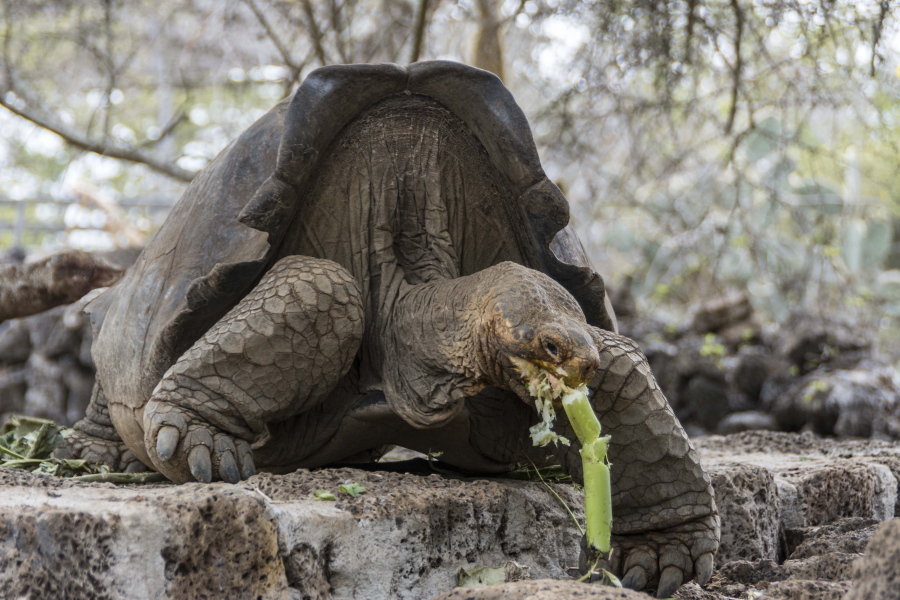QUITO, Ecuador — Scientists in Ecuador’s Galapagos islands are hoping to restore a tortoise species believed extinct since the 1800s.
The Chelonoidis elephantopus lived on Floreana Island and was captured by seamen in large numbers for food during long journeys across the Pacific. The species is thought to have disappeared shortly after Charles Darwin’s celebrated visit to the treasured archipelago.
But a group of international scientists who collected 1,700 blood samples from tortoises on Isabela Island farther north during an expedition in 2012 made a surprising discovery: 80 had genetic traces of the lost species.
“This is a species that was considered extinct for 160 years,” Washington Tapia, one of the scientists studying the tortoises, told The Associated Press. “We didn’t imagine what we would find.”
Researchers with the Galapagos Conservancy and the Galapagos National Park are now trying to restore the species by selecting 20 specimens with higher amounts of the Floreana tortoise in its DNA to reproduce.
“We are not going to have a perfect species, genetically 100 percent like the one that was in Floreana,” said Linda Cayot, a scientific consultant with the Galapagos Conservancy. “But we will have a tortoise population with many of the same genes as the original.”
Scientists believe sailors who caught Floreana tortoises for food sometimes dropped them off on Isabela Island in order to lighten a ship’s load before crossing the ocean. Isabela Island was typically the last stop before setting sail.
The 20 tortoises identified as having the highest amounts of Floreana DNA have been placed in corrals containing three females and two males each in hopes of one day repopulating the island with close copies of the extinct species.



